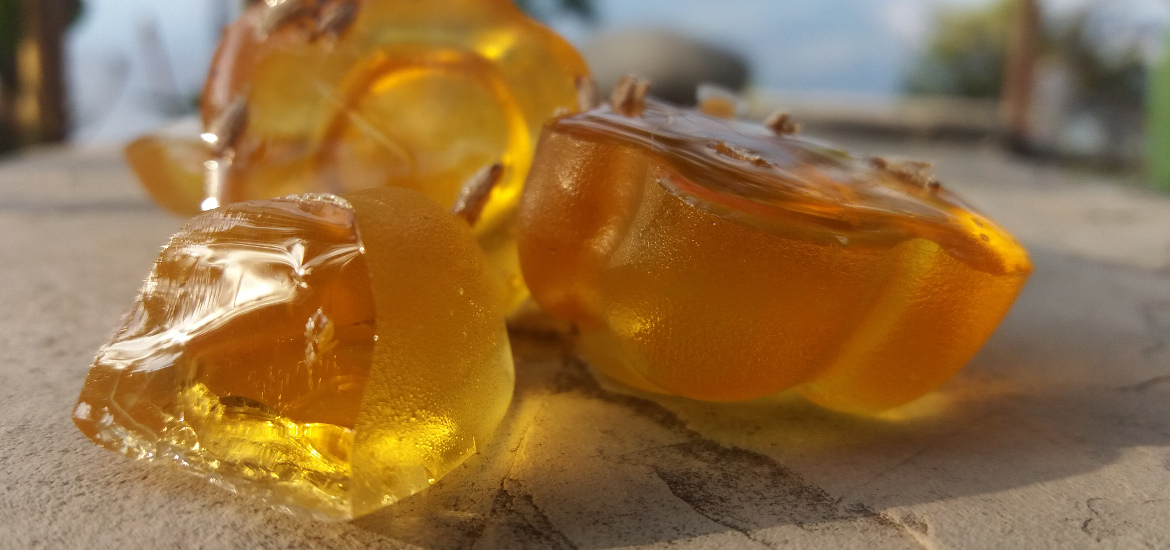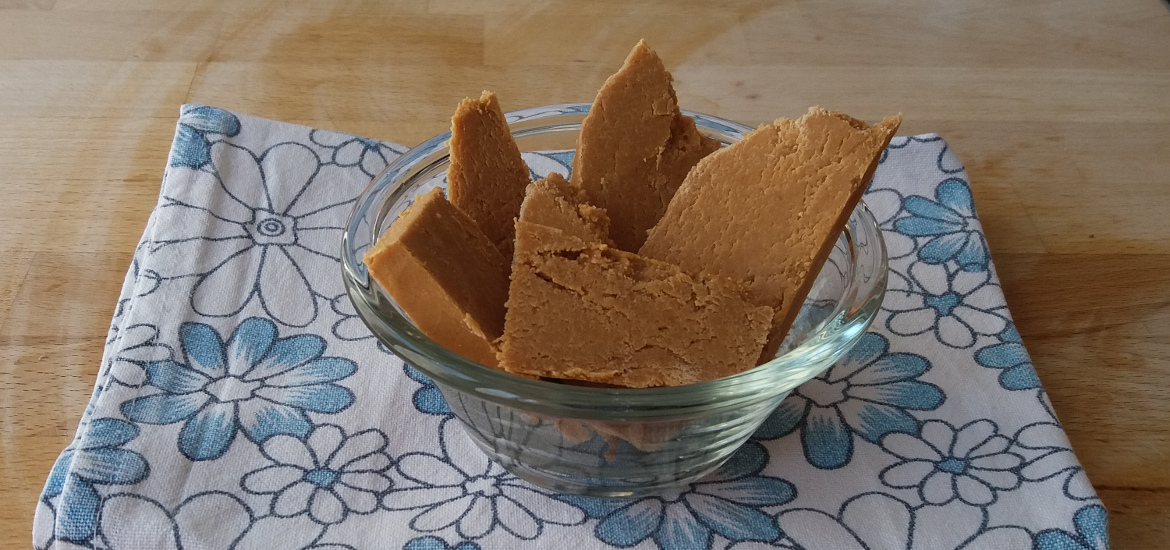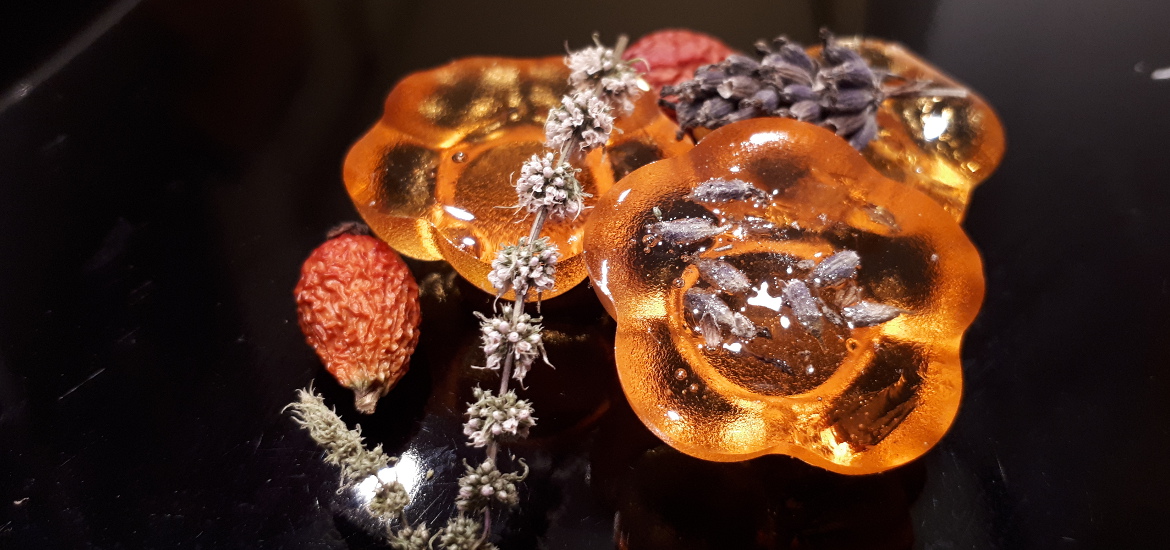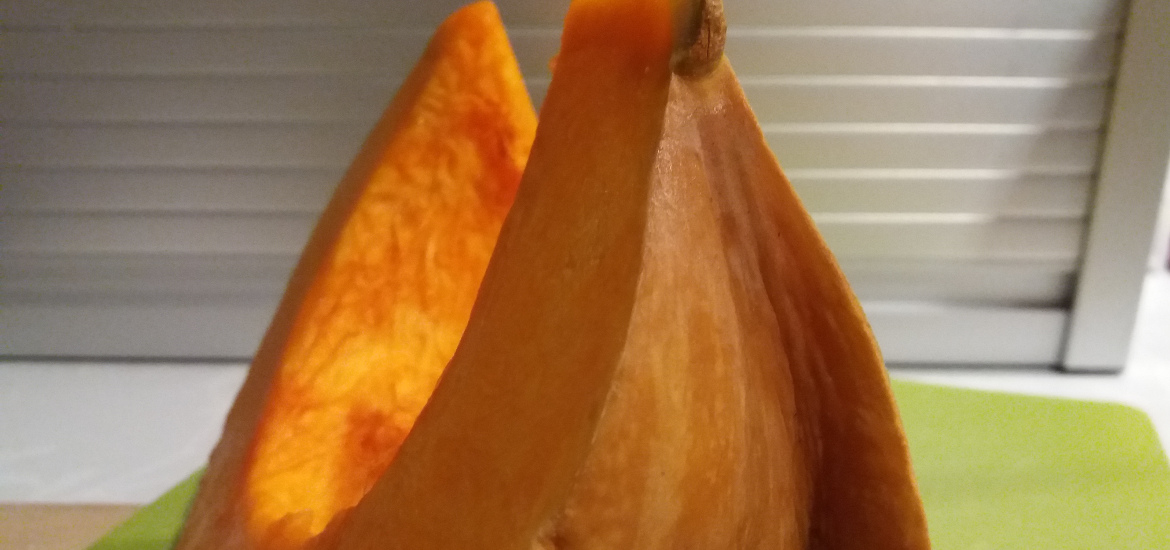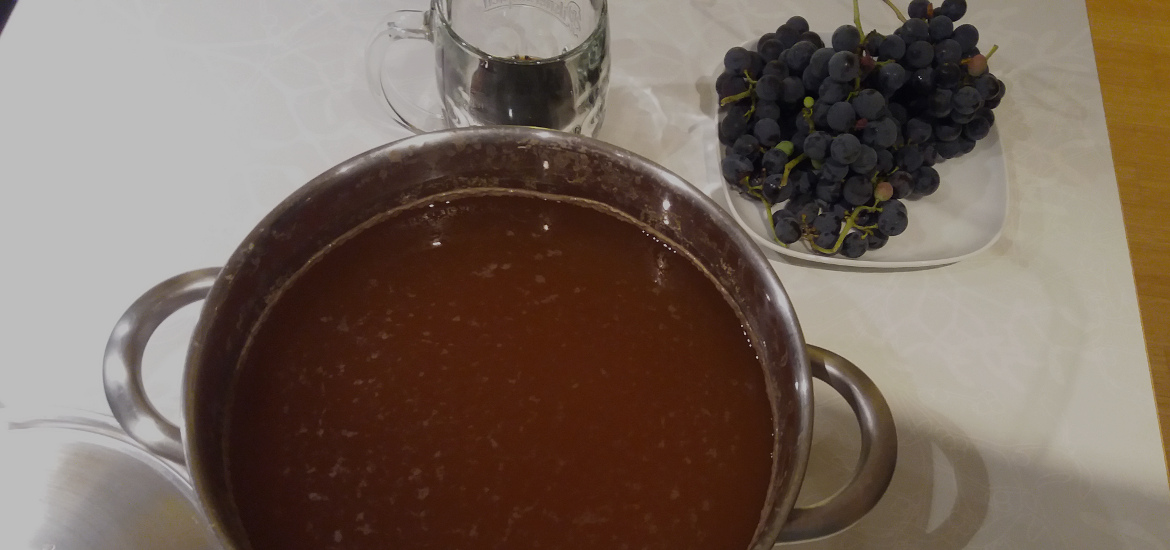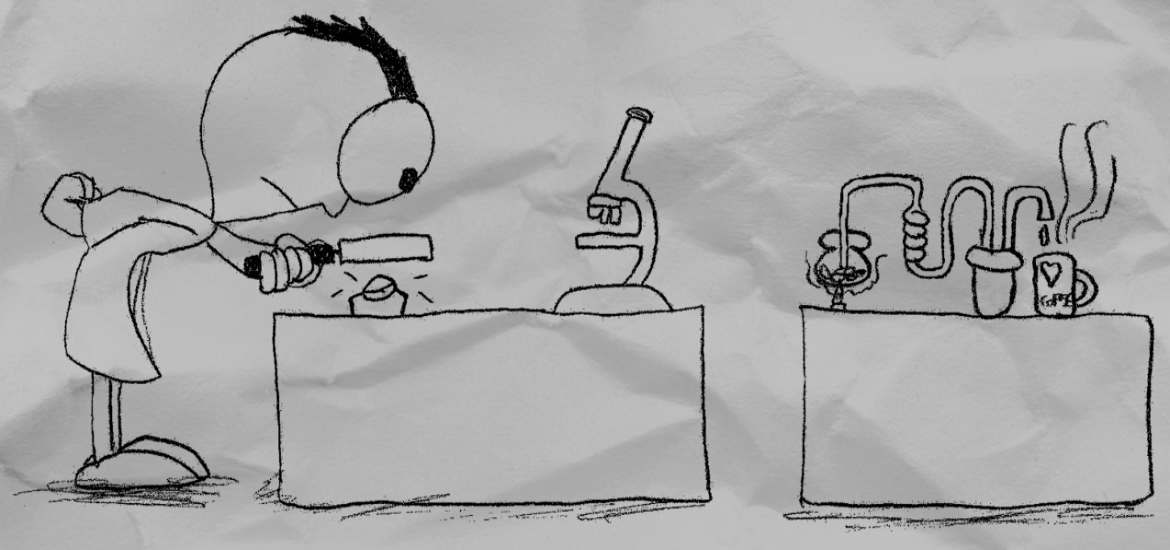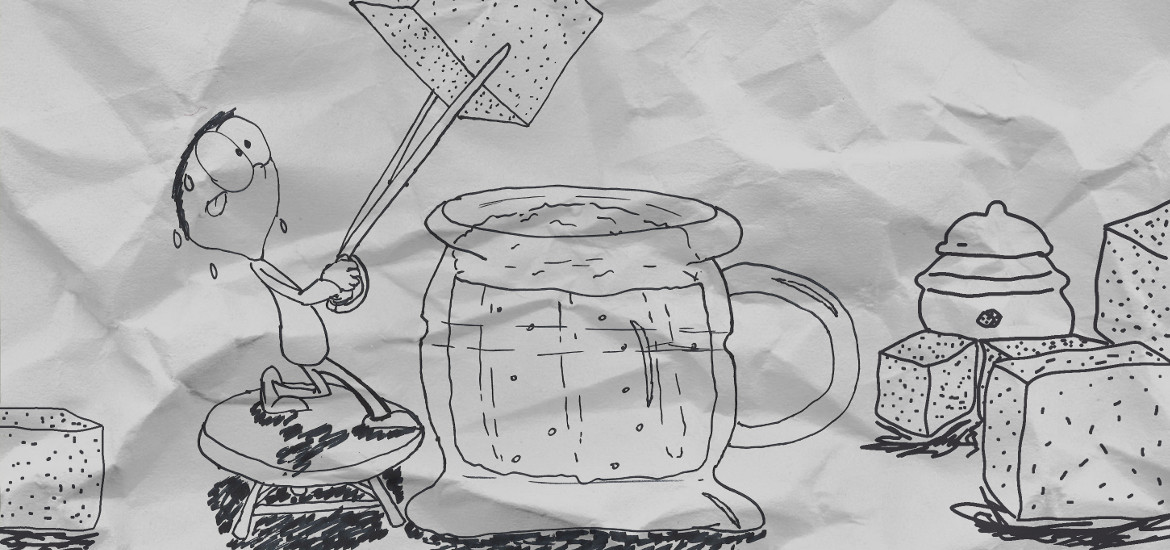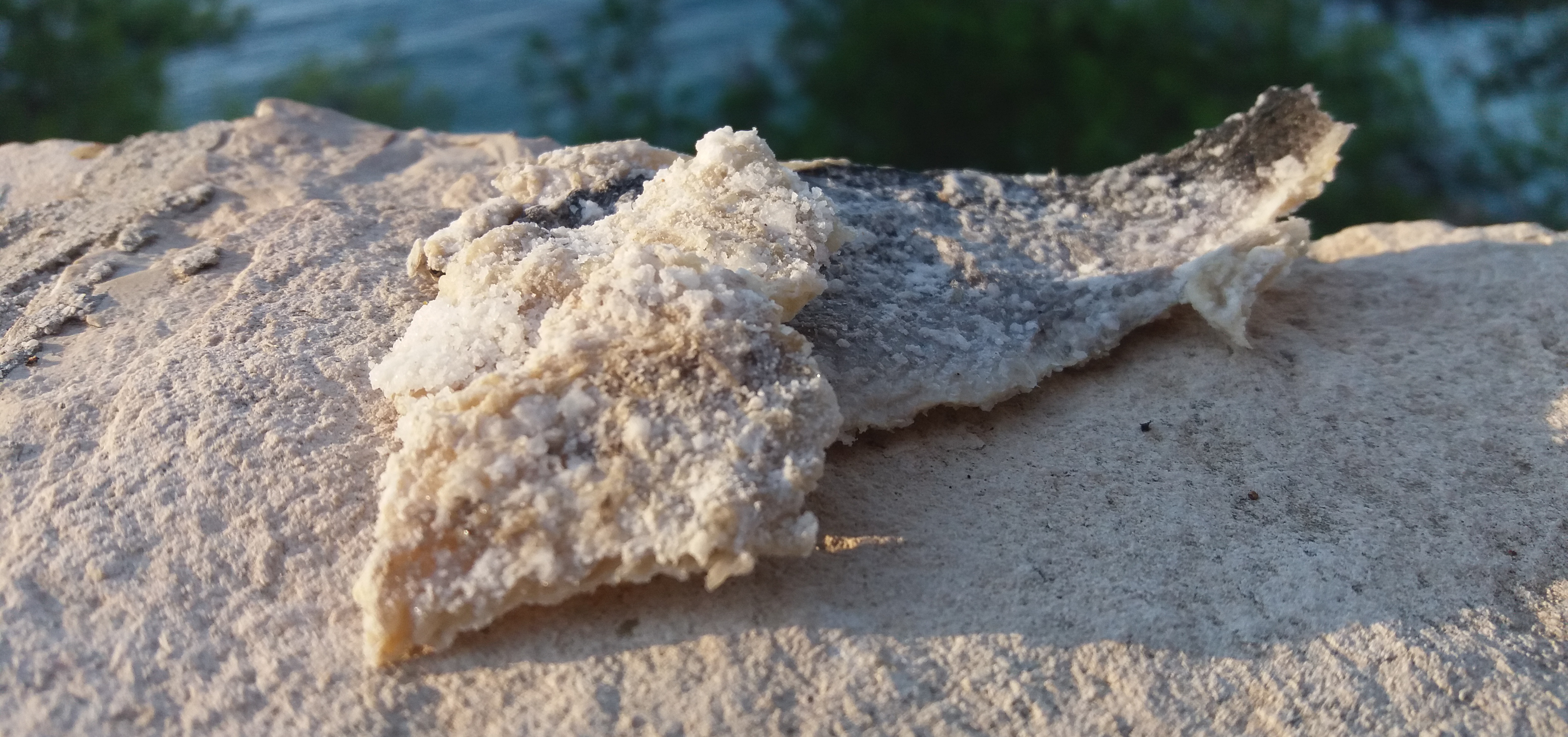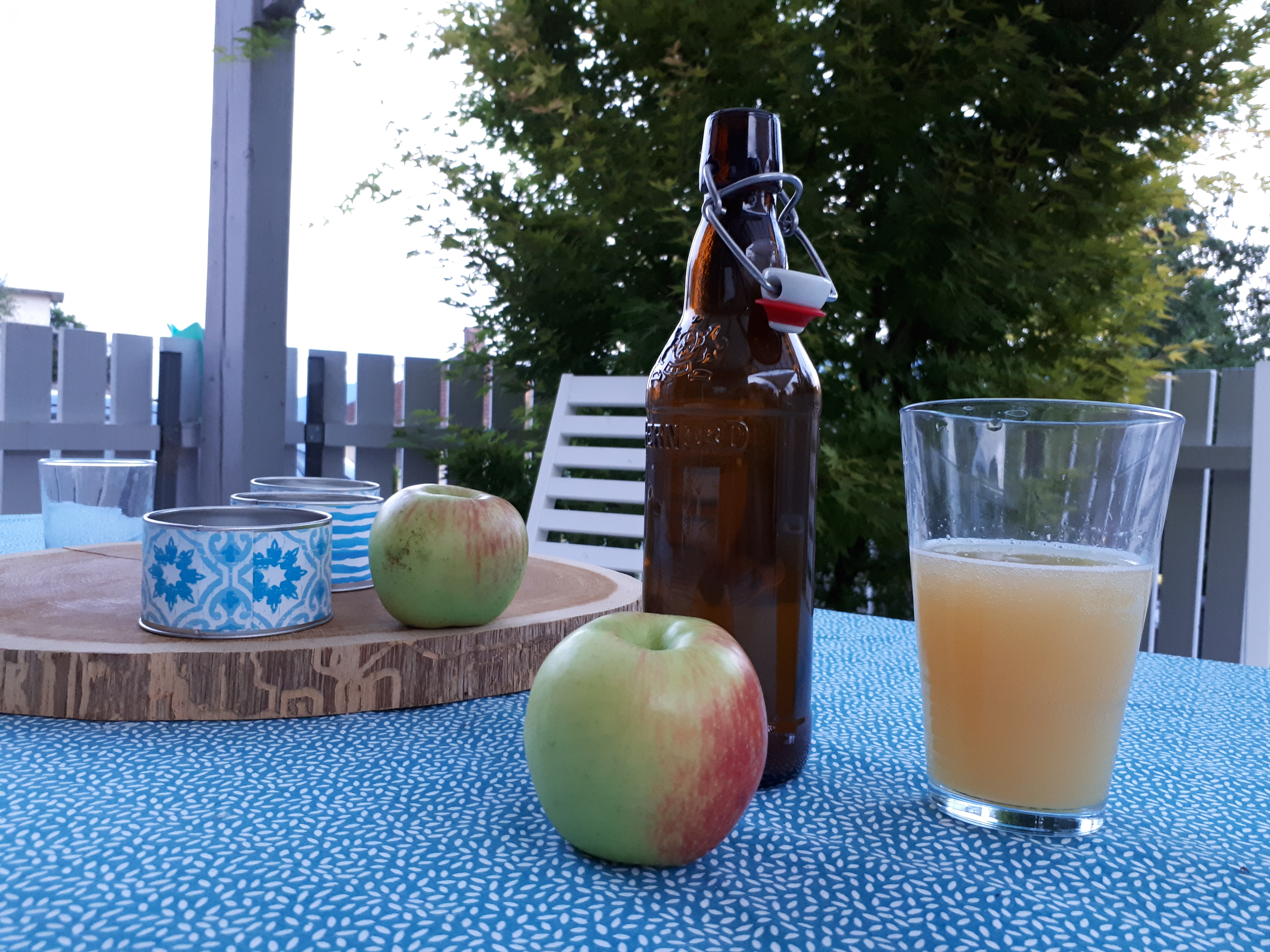In my piece about fudge I explored one end of sugar/water mixtures used for fudge making. These mixtures are said to be at the soft ball temperature since you can freely knead the sugar mass if you cool it down. At the other spectra of useful sugar/water mixtures is so-called hard crack temperature, used for making hard candy.
At this temperature, the sugar mass is hard and impossible to knead if you cool it down to room temperature. Hard candy is literally pressed into form while still hot by various machinery somewhat like tablets or pasta. At home, such machines are rarely found, so I will try to make simple hard candy with the ordinary kitchen utensils.
SIMPLE HARD CANDY TEST No. 1
For the first test, I tried to make some simple candy mass by mixing table sugar with water. Two spoons of water and four spoons of sugar. I heated the mixture until it started to boil at around 103 C. With occasional stirring I let the mixture boil on low heat until it reached around 130C. I dropped a small amount into cold water – the resulting mass was still sticky, so I left it to boil some more.
However, after a minute of slow cooking, the mass crystallized and dried out. Definitely not what I expected. Frustrated I continued heating and mixing until the sugar started to melt and caramelize. If I could not make candy, I would at least make caramelized sugar! When the sugar was completely melted I poured it into silicone molds – the result was excellent caramelized candy, brownish and opaque. Although it was excellent it lacked the clear crystal look, therefore improvements were needed.
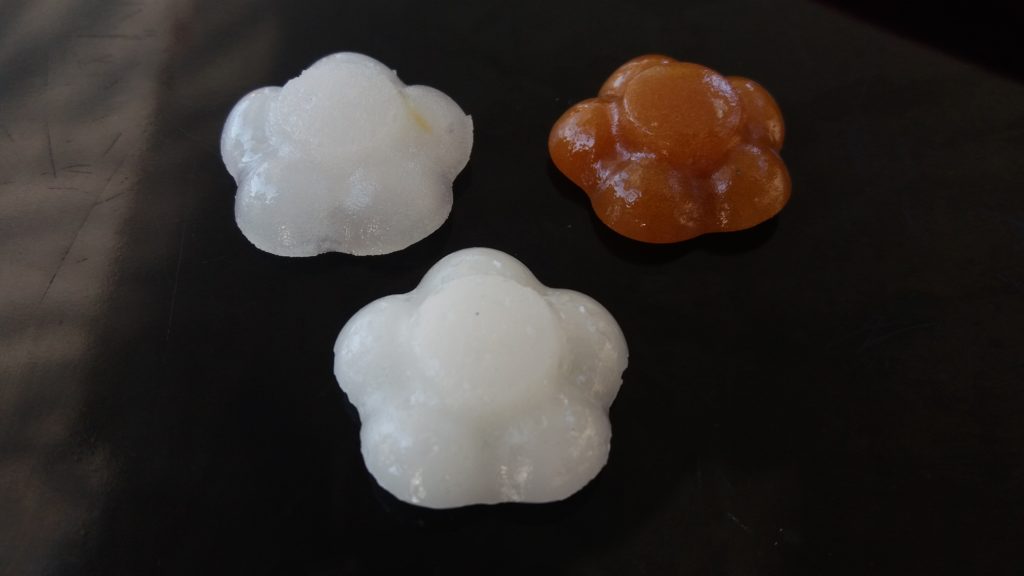
SIMPLE HARD CANDY TEST No. 2
After some thought I decided that the problem was the starting amount – the starting mass was just too low and relative water evaporation was too quick and hence lead to rapid crystallization. In fudge making the amount of water in the final product is relatively high – around 15% (link wiki). This is less sensitive to rapid changes and less prone to rapid crystallization.
In hard candy, there is practically no water present in the final product and nothing to inhibit crystallization. Therefore, when we are making small batches and the amount of water in boiling mass is coming close to 0%, the jump from 2% to 1% to 0% water is really really fast since this is really a small mass of water that needs to evaporate. The change in water cannot be so quickly distributed throughout the boiling mass and therefore crystallization occurs.
To test this hypothesis I made 400 g of mass. The evaporation speed was similar as before since the heating power was the same. Logically it took the boiling mass much longer to reach 130 C, compared to the first test. There were some sugar crystals visible on the edges, but otherwise, the mass continued to boil happily. The temperature reached 150 C and although there were a lot of crystals at the edges, the majority of the mass was liquid. When dropped into cold water, long, brittle needles formed. It all looked perfect. I poured the mass into silicon molds.
Towards the end of pouring the mass got thicker, so I tried to scrape it out with a spoon. The mass solidified into a hard mixture of small crystals. To my horror the same was happening to the mass poured into molds. Everything was slowly turning to opaque, whitish mass of small crystals. Kind of compressed table sugar. The result was not bad, candy with glinting small crystals and soft, grainy texture. But it was not the thing I was aiming for.
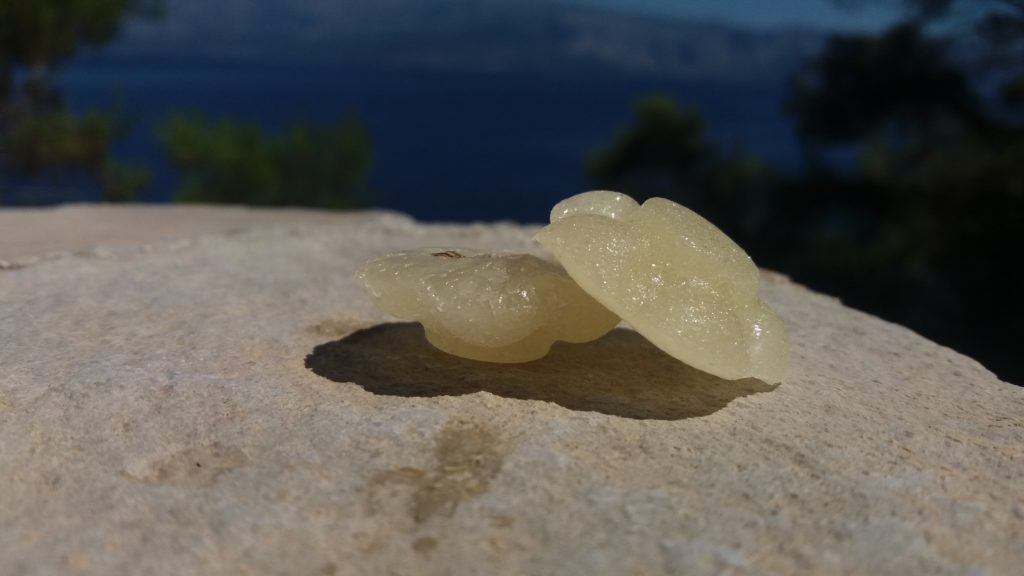
SIMPLE HARD CANDY TEST No. 3
I clearly needed something to prevent the crystallization. So for the next trial, which was a repetition of test number 2, I added around 20 drops of lemon juice to the 400 g of the starting mass. The acid in the juice turns a portion of the table sugar into fructose and glucose, which does not easily crystallize and also interfere with the crystallization of sucrose. Exactly how much of the sucrose is converted is hard to say without the measurement. But it was clear enough to prevent the formation of small crystals.
When the temperature of the boiling mass reached 150 c, I poured the mass into silicon molds. Upon cooling down the candy looked exactly as imagined – a single clear hard crystal. And the taste was matching – sweet, gentle with no trace of acidity. In one word, my hard candy was finally perfect.
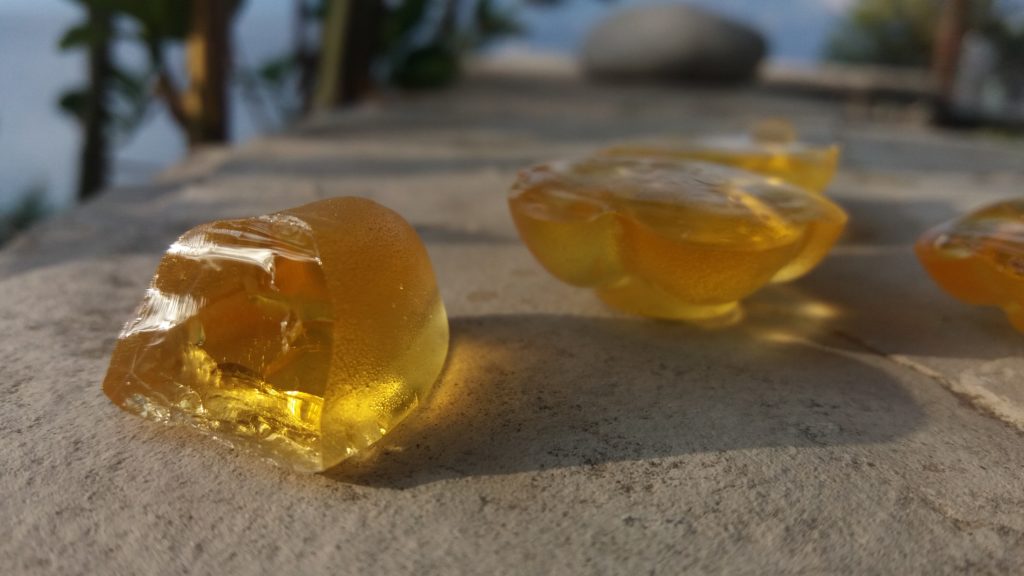
MAKING SIMPLE HARD CANDY
Ingredients:
- 300 g table sugar (sucrose)
- 100 g water
- 20 drops lemon juice
Mix all the ingredients. Bring to boil – the sugar should completely dissolve in the water to form a clear, viscous syrup. Continue cooking on small heat setting (the liquid should boil slowly) until the temperature of the mass reaches 150 C. Pour the mass into molds and allow to cool down.
Image credit: Amazing Food
